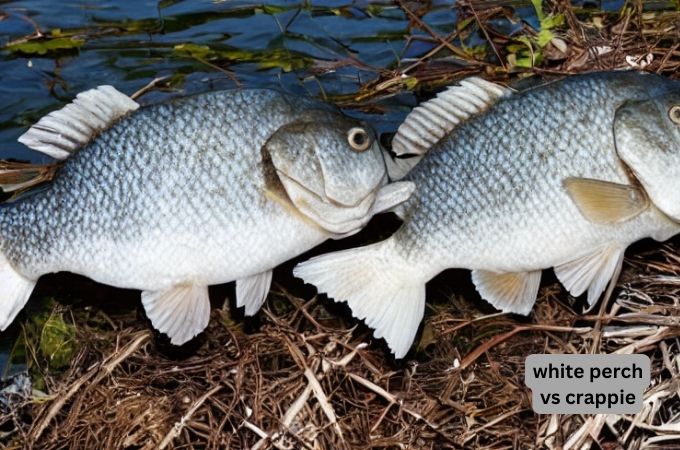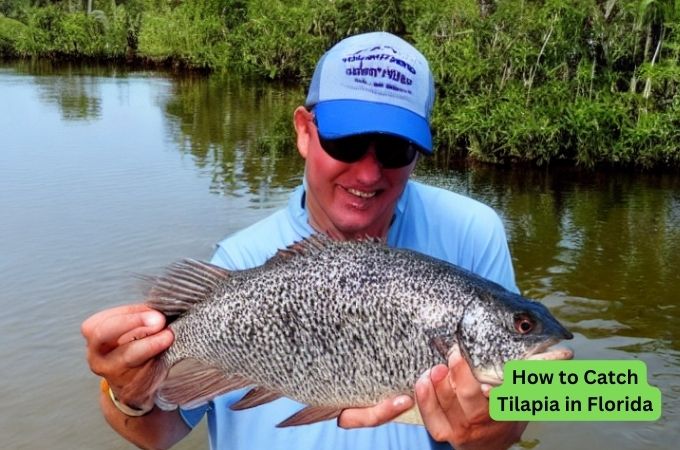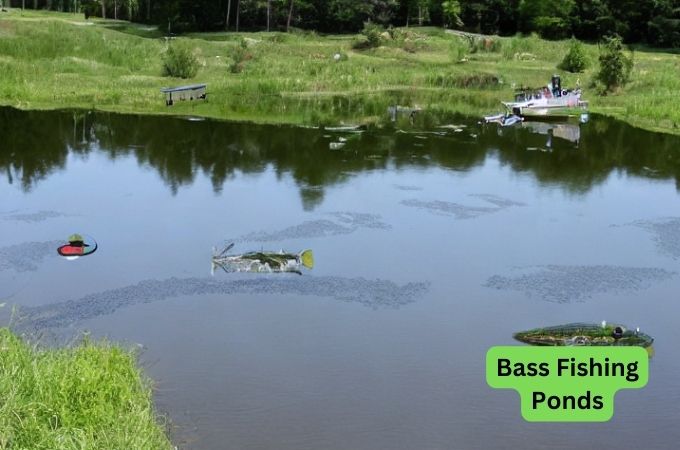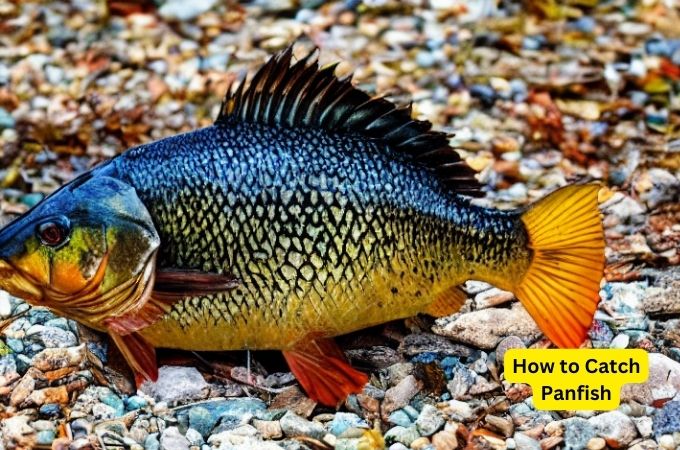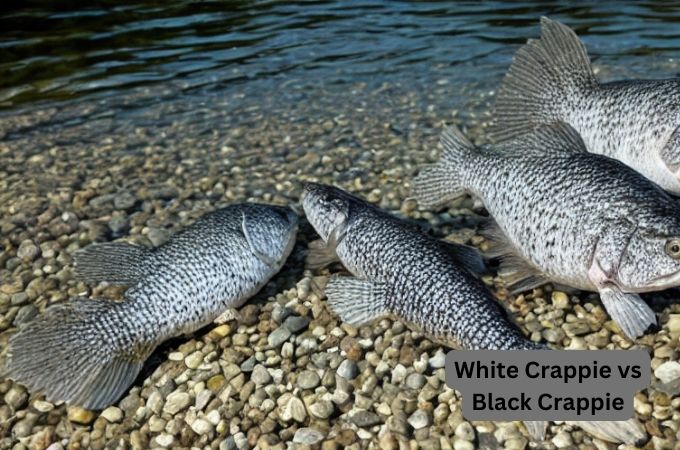How To Catch White Perch | The Ultimate White Perch Fishing Guide
Today’s topic is How To Catch White Perch.
Why do you fish? It is not always just for fun and you know that. Most of the time you fish for the species that taste really good. White perch is such a fish that is not only fun to catch but also worth the difficulty.
It tastes really good with a hint of sweetness in it. They are among the smaller species so you can just catch quite a lot in one go and feed a number of guests delicious fish dishes made with white perch.
Nothing good in life comes easy and white perch does not either. You have to be very patient and strategic when you fish for white perch. They may not have the best brains but they do have survival instincts. Any lack of knowledge about them or lack of proper gear will definitely make you and your guests miss a fish meal you were expecting after a fishing session.
Therefore, what you should know first is everything you can about white perches. Only then will you be able to decipher how to catch white perch. So, let us now enter the world of white perches and know everything we can know about them.
Things To Keep In Mind About White Perch
You cannot expect to know white perch fishing tips from pros without knowing how and where they live. Therefore, what you should know first and foremost is everything you can about this species that you are targeting. So, in order to know white perch fishing tips, you need to know a white perch first.
What Exactly Do They Look Like?
Even though they are called white perch, white perch are not always white. In fact, a white perch can be pale olive and silvery green on the sides and silvery white on the belly. But, yes the color are look very close to white so that is a justification for the name.
Furthermore, you might be confused between a white perch and a striped bass. Apparently, white perches are like the smaller twins of striped basses but not totally identical.
They look very familiar to white basses but they lack the stripes. Therefore, if you see a smaller, stockier, non-striped version of a white bass then chances are that’s a white perch.
Where Can You Find Them?
You will never find a beaver sleeping in a lake, will you? Looking in the wrong place will only lead you to an unhappy fishing session with no perch captured.
Even though white bass and other basses are larger than white perch, white perch is more coastal in nature. You can find them in abundance on the Atlantic Ocean coast and near the Chesapeake Bay.
Apparently, white perch love being in low-saline areas like estuaries. You will find them more often in brackish areas. So, you get an idea about where they usually stay (mostly coastal areas).
Now, the depth at which they stay actually varies with season. In fact, it may vary with their life cycle stage as well. For example, they are ought to move in a different way when they are spawning.
When it’s winter, white perches generally love to stay in deep water, probably because of the warmth. In fact, they can even act like bottom fishes in winter. However, at other times of the year, especially in summer white perches are available in shallow waters. Therefore, you do not have to look too deep.
You can fish for white perches all year round because they can even be found in ice water! All you need to do is prepare yourself right with all the knowledge and gear you need.
When the white perches enter the phase of spawning, they move from saltwater to freshwater or brackish water. April, May, and June are generally the spawning months. Therefore, you can fish for white perches in freshwater during these months.
What Do They Prefer To Eat?
Luckily, white perches feed on a number of different kinds of fish. Apparently, it is not only the fishes they feed on but also larvae and eggs. In fact, eggs and larvae are one of the most popular foods for white perches. Apart from that, the food habit of white perches may vary on the basis of where they are staying.
For example, when the white perches are residing in slightly salty or brackish water, they tend to go after shrimps, crabs, and other invertebrates. Apparently, this carnivorous fish loves to eat shrimps, crabs, etc. During the spring months, however, white perches prefer to eat fish eggs more.
This may seem a bit brutal for a fish, killing innocents, but this is what supplies the dish with adequate nutrition to function as it should. Apparently, the story is even more brutal as white perches love to eat the eggs of their distant relatives, the white basses.
That’s betrayal at a whole new level among fishes but that is how they survive. You should keep all these in mind when choosing the bait or lure to get the quickest response. Because you do not see vegetarians running after a meat festival.
How to Catch White Perch: The Things To Do
After you know almost everything about white perch except the unpredictable things, you should know how to deal with this ‘everything’. Here are a few tips that will definitely keep you prepared for the predictable things and partially prepared for the unpredictable ones.
1. Dress For The Occasion:
It will not always be one particular season when you will feel like going white perch fishing. In fact, you might feel it at any time of the day at any time of year. The reason is that white perch is almost always available. Maybe it is a hot summer day or it may be an icy winter day, white perch will just be waiting alive to bite your lure/bait if you do everything right.
When you go fishing, it is important that you keep your mind focused and only feel the excitement and calmness that comes from fishing. This will further help improve your fishing skills. You do not want to leave early or be distracted because you are sweating too much, or shivering. Therefore, the first thing you have to do is keep yourself comfortable as per the weather demands.
Apart from keeping yourself comfortable, you should take measures to keep yourself safe as well. While a bulletproof jacket will not be necessary when you are fishing (maybe), other things like a raincoat, or hat to protect from the harmful UV rays might be necessary. So, make sure you carry all these with you in the right season.
2. Equip Yourself With The Proper Gears:
You know well that not all fishing rods can catch all fish. Each species requires a rod of different specifications to be caught easily and so does the white perch. By gears, we basically mean the rod, reel, and line. You already know that white perches are smaller fishes so you do not really have to find a rod with a heavy test. In fact, you will do fine with a rod with a 6 to 8-pound test.
As these fishes are quite small, you do not need extra strength but if you are comfortable having more on your hands then you can go for rods with tests up to 12 pounds. Furthermore, as these fishes are small you will be catching a few and will need to keep them somewhere. So, make sure you have a clean and convenient place to store the prey while you fish for more.
3. Choose The Right Place To Fish:
As we already mentioned, if you look in the wrong place for a fish that does not even exist there, you will never catch a white perch. You already know where white perch usually resides.
Therefore, look in the mentioned places like estuaries, and brackish waters, and you will definitely come across a school of white perches. As white perches are available in plenty, the right place will never disappoint you with a shortage of them.
Apart from their usual preference, another thing you should keep in mind is their protective instinct. White perches like to be warm but not too warm. Therefore, they like to stay in shadowed waters.
Furthermore, they will stay in the shallow water during summer but mostly in the shallow parts of deeper water. And, to protect themselves from various kinds of dangers, they prefer staying in places where they find more things to hide behind or in. Keep these in mind when looking for a hot spot of white perches and you will not be disappointed with your effort.
4. Find The Right Time To Go Fishing:
This fish is available throughout the year but they still do have some preferences, right? So, they are not equally active throughout the year or day. Their activity levels differ at different times of the day.
What you have to do is mark when the fishes will be more hungry and will be looking for food and be the most active. This is because white perches are most active when feeding.
In general, it is better if you fish for them in the early morning and evening hours in late spring and summer, late afternoon and evening in late summer, morning and late afternoon in autumn, and finally, late afternoon and evening in winter. However, this is not the only time you will find them but the chances are higher during these hours.
5. Choose The Proper Bait/Lure:
As white perches are smaller, they move fast. Your lure or bait must be small and fast as well. It is best if you use live bait but it is alright to use lures as well. White perch are a huge fan of insect larva and minnows. If you do use lures then it is best if they are yellow, white, or both in color. Furthermore, these lures should react to movement well and fast.
6. Choose One Method Of Casting:
You can fish for white perches following various casting methods. One of them is baitcasting which will give you a lot of control over your casts. You can cast at the preferred spot and then reel in again if you think the cast was not perfect.
Another method is still fishing. This method needs more patience and care. Because in this you will just cast your line and wait for the fish to bite without doing a thing.
Trolling is a more fun method of fishing for white perches. You just cast the lure or bait and keep moving your boat with the lure or bait following behind. However, you need to be careful that the movement or sound of the boat does not scare away the fish.
Apart from that, ice fishing techniques come in handy during winter.
7. Be Very Responsive:
It was mentioned several times but we are mentioning it again because the fact is important- White perches are small fishes. Therefore, you cannot expect big, noticeable bites from them. You will have to take the cue from only a mild peck and start pulling the line.
Apparently, the speed of the line matters too. Do not be so fast that the hook gets detached from the fish. Again, do not be so slow that the fish detaches itself on its way up.
8. Keep Trying Where You Got One Catch:
White perches actually move into schools. They are never alone. Therefore, when you catch a white perch at a place, look for more at the very same spot.
Because chances are others are still there roaming around in search of food without a clue that one of them is missing. Use this opportunity and you will undoubtedly be able to catch a lot of white perches at that one specific spot.

In Conclusion:
You see each species has its own unique characteristics and habits. While the fishing techniques and strategies may more or less be the same, where, how, and when they are to be used differ with the species.
The purpose of our how-to-catch white perch guide was to let you know the characteristics that will help you catch white perches and also the methods that are usually helpful for catching them. Now, you are equipped well with knowledge about white perches and how to catch them. It is time for you to turn this knowledge into action.
